2022 has been particularly active for wildfires, with 64,100 wildfires affecting 7.3 million acres as of December 2, 2022. Alarmingly, nearly half of those acres were in Alaska alone. Wildfires can be incredibly destructive, but firefighters have ways to stop them. One way firefighters fight forest fires is by digging trenches. Let’s find out why firefighters dig trenches to control and put out forest fires.
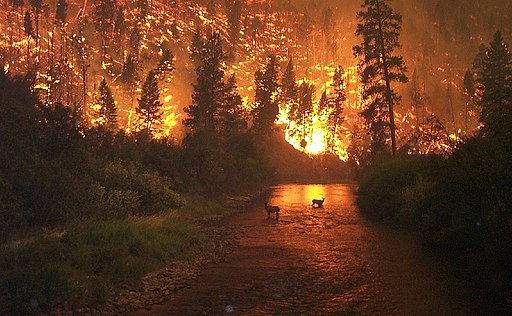
A breathtaking view of a wildfire in the Bitterroot National Forest, Montana, USA captured by John McColgan, a Fire Behavior Analyst at the U.S. Forest Service (USDA)
Facts about why firefighters dig trenches for forest fires
Forest fires are large fires that occur in wooded areas. Lightning strikes, campfires, cigarettes, or arson can cause these fires. Forest fires can destroy homes and property, making it hard for animals to find a place to live, and making the air polluted.
Trenches help contain and control the spread of wildfires
Firefighters dig fire lines, also known as fire breaks, to contain and control wildland fires. These fire lines help to manage and prevent the spread of wildfire by depriving it of fuel. Firefighters dig trenches to direct the fire towards a predetermined area, where it can be safely burned out.
Creating and utilizing the trenches on a wildfire scene
Firefighters use various tactics to create and utilize trenches on a wildfire scene. These tactics may include using hand tools, bulldozers, explosives, or a combination of these methods. The specific tactics used will depend on the conditions of the fire, the type of vegetation in the area. The resources available to the firefighters also play a vital role in selecting the tactics.
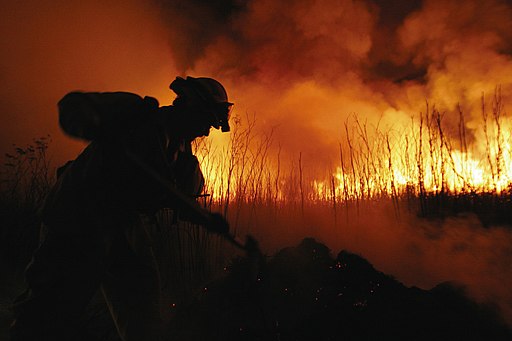
Fighting the Flames: A Firefighter from Pendleton’s Fire and Emergency Services digging a trench to contain the damage.
Scientific research supporting the use of containment lines
Scientific research supports containment lines as an effective technique in fighting wildfires. Studies have shown that trenches can help to reduce the spread of fires, protect homes and other structures, and preserve natural resources.
Environmental benefits
Containment lines can provide environmental benefits in the fight against forest fires. Trenches can help preserve natural resources, such as trees and wildlife habitats, by controlling the spread of wildland fire. Trenches can also help reduce the amount of smoke and other pollutants released into the air, which can negatively impact air quality. Overall, using containment lines can help minimize the damage caused by forest fires. Digging trenches also helps to protect the environment and the communities around the area.
Strategies to Dig and Utilize Trenches to Fight Fire
How to locate areas for a fireline or containment trench
Firefighters use various strategies to locate areas suitable for digging a fireline or containment trench. These strategies may include using aerial maps and satellite imagery to identify areas with a lower fuel load, such as rocky or sandy soil, or areas with natural barriers, such as rivers or roads.
Firefighters may also use on-the-ground assessments, such as looking for areas with little vegetation or other fuel sources, or areas that are easier to access with heavy equipment.
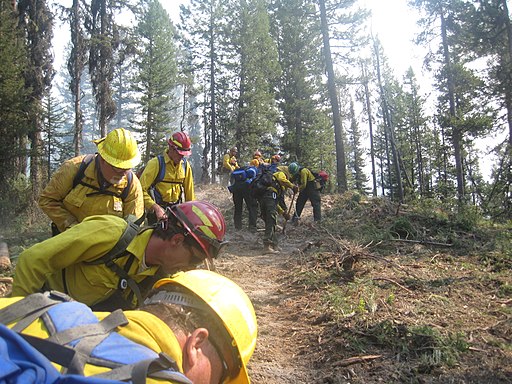
Taming the Wildfire: Firefighters tirelessly work on creating a fireline in the Darby Ranger District of the Bitterroot National Forest to contain the blaze.
Selecting materials
Firefighters use various materials to line the bottom of the trench to make it more effective in staying intact during a firestorm. These materials may include sand, gravel, or other non-flammable substances. The materials used will depend on the fire condition, the vegetation, and the resources available to the firefighters.
Securing equipment and tools
Firefighters or ground crews rely on hand tools such as Pulaski axes, picks, rakes, and shovels to quickly and effectively dig trenches over long distances. The portability of these tools makes them preferable to large machinery.
Fire bulldozers may also be used to help create and maintain fire lines.
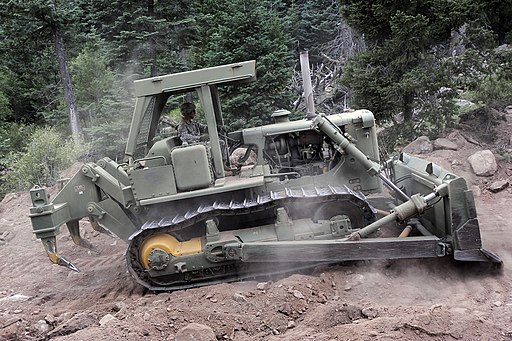
U.S. Army Command Sgt. Maj. Patterson constructs a firebreak using a bulldozer near the Air Force Academy in Colorado.
Utilizing items to reduce fuel sources
Firefighters may use various techniques and materials to reduce fuel sources around the fire’s edge to control the advancement of flames toward the desired area. These techniques may include using oil, foam, or other fire retardants to create a barrier around the fire. Firefighters may also use sand, gravel, or earthmoving equipment to remove or cover fuel sources.
Contained means that a fire has been surrounded by a barrier such as a fire line. Once a fire is contained, it poses no further risk of spreading to new areas. It can be seen as being successfully managed. However, the fire may still be burning within the contained area and may produce smoke and flames.
Jim Gersbach, the public information officer at the Oregon Department of Forestry, explains that it is common for people to misunderstand the meaning of “contained,” as the fire may still be active and visible even though a barrier has surrounded it. It is worth noting that while a fire may be contained, it may still require ongoing efforts to extinguish it entirely.
Benefits of digging trenches
Trenching is a valuable process that firefighters use to fight forest fires. There are several benefits of digging trenches to reduce losses due to wildfires.
First and foremost, digging trenches can potentially save lives by helping to subdue large-scale blazes faster than other techniques. By creating a barrier between the fire and the unburnt area, firefighters can deprive the fire of fuel and prevent it from spreading to nearby communities.
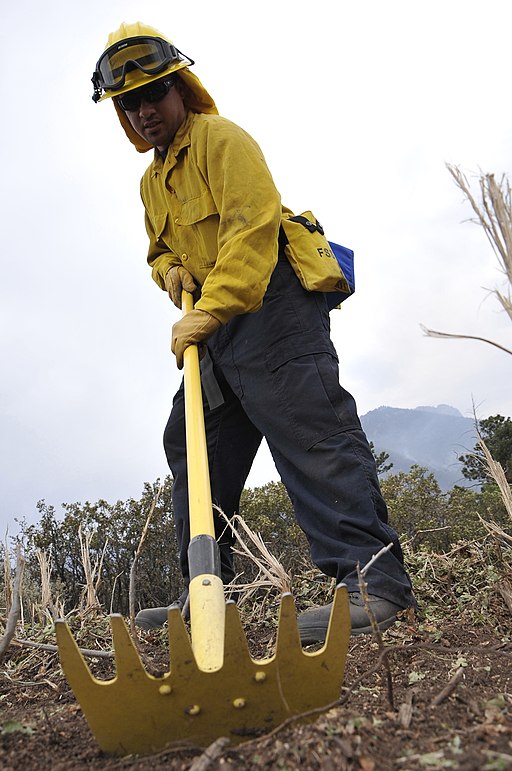
Bobby Garza, a firefighter assigned in Buckley Air Force Base, diligently cutting a line to create a firebreak to prevent fires from spreading.
Containment trenching is also effective at preserving natural resources and wildlife. Trenches can help preserve trees, vegetation, and habitats for wildlife by containing and controlling the spread of the fire. Containment trenching can be especially important in areas with a high concentration of rare or endangered species.
Fire retardant may be dropped from aircraft to help slow the spread of a forest fire, but fire lines are a critical component of on-the-ground efforts.
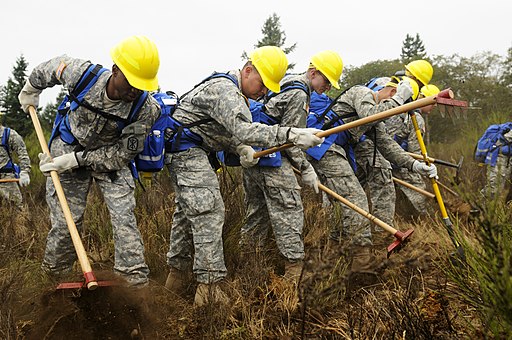
Prepared for Action: Soldiers from 5th Battalion, 3rd Field Artillery Regiment, 17th Field Artillery Brigade, honing their skills in creating a firebreak during wildland firefighting training.
Digging trenches as a wildfire containment strategy can provide significant cost savings compared to other methods. Heavy equipment such as bulldozers and excavators can quickly and efficiently dig trenches. Firefighters can then maintain the trenches with minimal effort over time. This process helps reduce the overall cost of fighting a wildfire. It also allows firefighters to focus their resources on other areas.
In summary, containment trenching is a valuable tool that helps to reduce losses due to wildfires, preserve natural resources and wildlife, and save costs. It is an effective technique that can help protect homes and other structures and the environment in the fight against forest fires.


